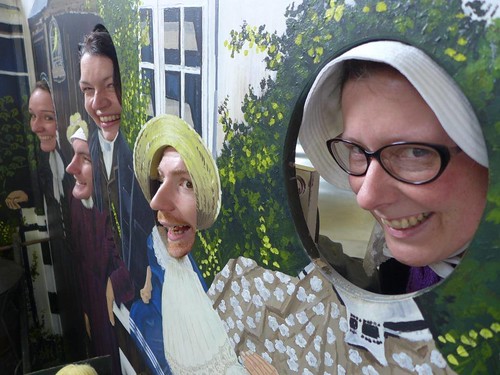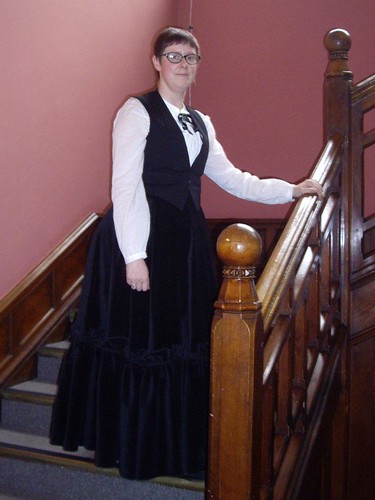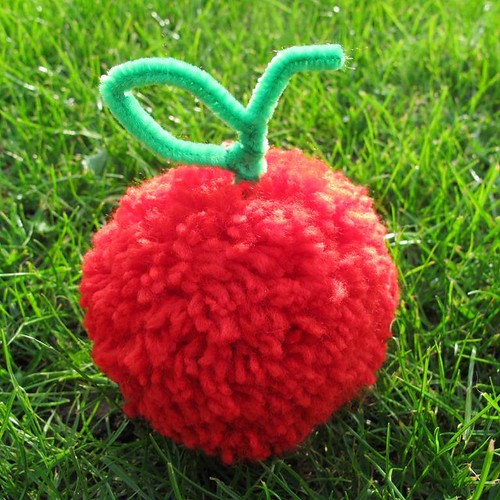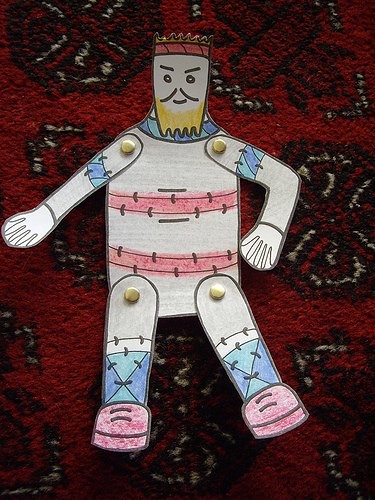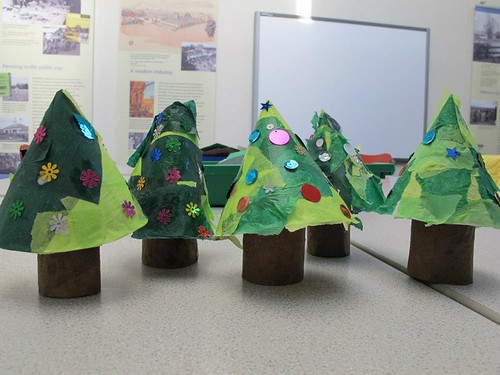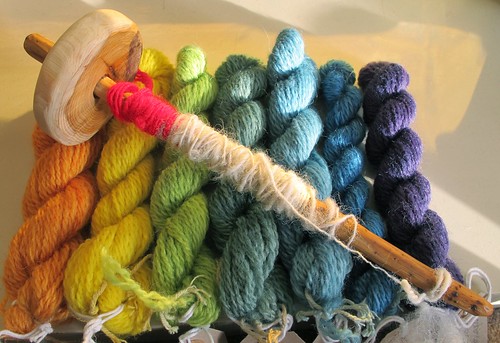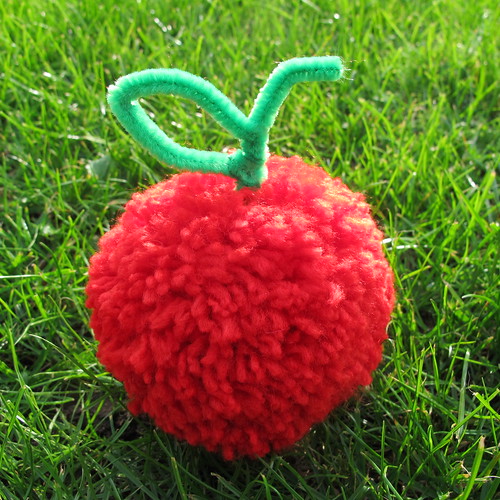Remember this woodpecker, that the Lego Scientists were admiring in 2015? It came into the @ColeZoology lab recently, for a spot of tlc. 1/4 https://t.co/5J6Szv3ZMG
— Claire Smith (@wetconservatrix) July 22, 2019
Category: museums
Chameleon and her eggs
Things In Jars!
Preparing for display
Spirit Collections Care
What I do when I’m not sewing…
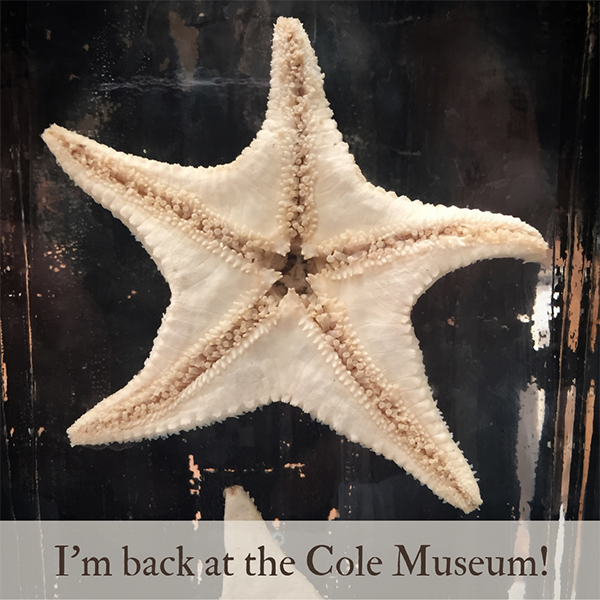
You might have noticed that I’ve been doing an awful lot less sewing than I used to. That’s because I’ve been preparing to go back to University in September to start an MA in History. To get the fibromyalgia used to the idea of actually Leaving The House And Doing Things, I’ve been doing some volunteering with the University’s museums and collections.
I’ve been away from the Cole Museum of Zoology for about four years. Firstly I took a job which clashed with the time allocated for volunteering, and secondly that job ended up making me so ridiculously ill that it’s taken me almost two years to recover from it. But! I recently made it back to the museum, and to be quite honest, sitting down with a bench full of spirit specimens in front of me just felt like home. I’d really missed it, and it’s so good to be back.
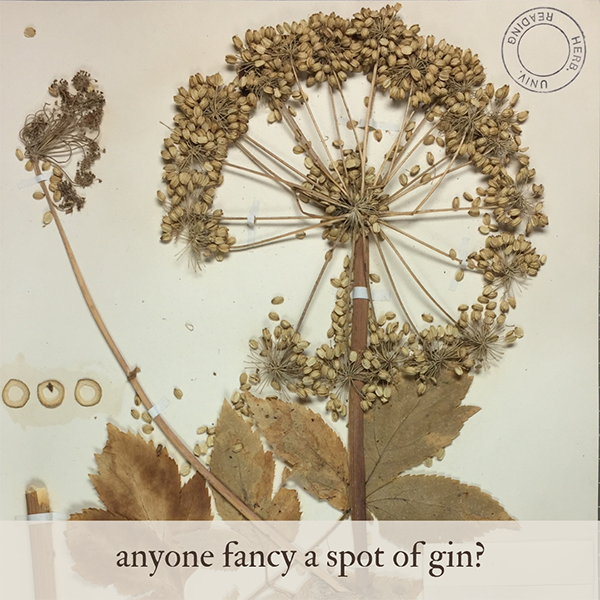
I’ve been volunteering at the Herbarium since last October. I’ve mostly been working on one project, the Cyclamen Society collection, helping to prepare it to be added to the University’s cataloguing system.
Occasionally I get to do other things too. Last week I had a lovely time looking through the collection for very specific specimens, all relating to gin! July 8th was World Gin Day, and Alastair and I wrote a blog post all about botanicals.
I also wrote a Twitter thread about some interesting coriander specimens – something I also got to do for Museums Week. The theme of the day was “rainbow”, so I wrote about colour retention in the cyclamen specimens, historical hair colours (don’t do it, folks!), and plant-based textile dyes.

I’ve also been taking full advantage of the University’s Special Collections, and getting a bit of a head start on my MA dissertation research. I recently requested two agricultural books, printed in 1585 and 1614. One of them was in absolutely immaculate condition… and the other one was very clearly a well-used working book!
I’ve written a post about them on my second Patreon blog, Mrs Magpie Writes. (My first Patreon is for Miss Mouse.) My next task is actually to re-write pretty much all of the information about that Patreon project, as I set it up before I decided to go back to University, and I’m no longer doing, well, any of the things it says I’m going to do. Oops.
So, this is a bit of a heads up to say that I’m going to be blogging about all sorts of different things from now on! There’ll be a bit of history, a bit of museums, and I might occasionally still manage to sneak the odd little bit of sewing in from time to time.
Maria McKinney’s Sire exhibition at The MERL – extended until October!

Good grief. I started this blog on the 13th of March. It’s been sitting in the “drafts” folder all this time, and the exhibition finishes at the weekend!
UPDATE! The exhibition has been extended, and it’s now running all the way through to the 27th of October!
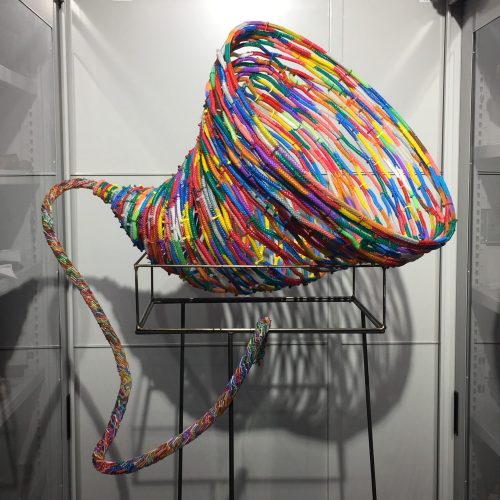
According to the brochure, “Maria McKinney’s Sire is an innovative exploration of selective breeding and genetics in contemporary cattle farming”. It’s also a fascinating juxtaposition with The MERL‘s own collections, both in terms of the methods used to create the sculptures, and the way that they’re displayed alongside one another.
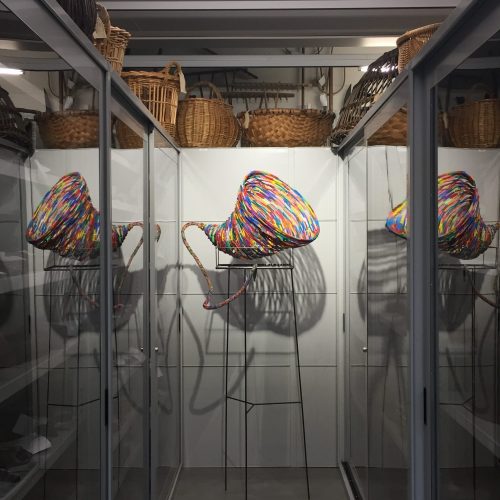
I took quite a lot of photos of the sculptures, all of which are made using the plastic straws that are used to store semen during the breeding process. This one, which is my personal favourite, is titled “Environmental Footprint / Cornucopia”. I absolutely love the contrast of its visual relationship with the basket work of various types that are stored above it, as well as its reflections in the glass doors on either side of the space.
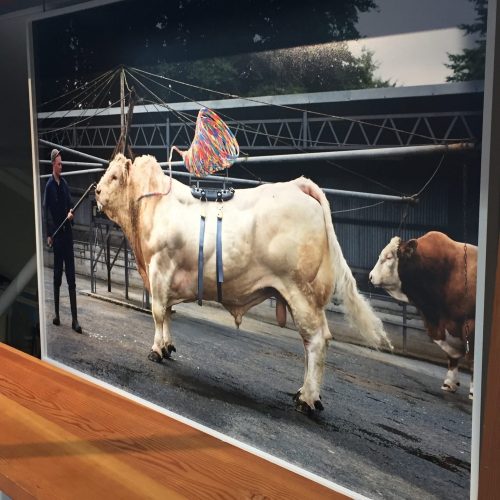
This oddly-angled photo does no justice at all to the main part of the exhibition, which is nine enormous photographs depicting bulls wearing the sculptures. They represent the different qualities that are considered desirable to breed into modern cattle, whether that’s increased milk production, climate resilience, or lack of horns. The best way to see these images at their full scale is quite simply to rush down to The MERL and have a look at them!
Both the images and the sculptures are displayed in The MERL’s first floor mezzanine space, which is also home to their strawcraft collection and their collection of livestock portraiture. Being able to see both the museum collections and the art exhibition in the same space enables the viewer to clearly see how studying these objects and paintings has been influential in the development of McKinney’s artwork.
I could happily waffle on about the juxtapositions of modern plastics versus natural materials, and the stark contrast between the lush green fields of the animal portraits and the heavily industrial surroundings of McKinney’s bulls… but honestly, if you’ve got time this week, I heartily recommend that you pop on down to The MERL and have a look!
Gerard’s Herbal and an exciting email
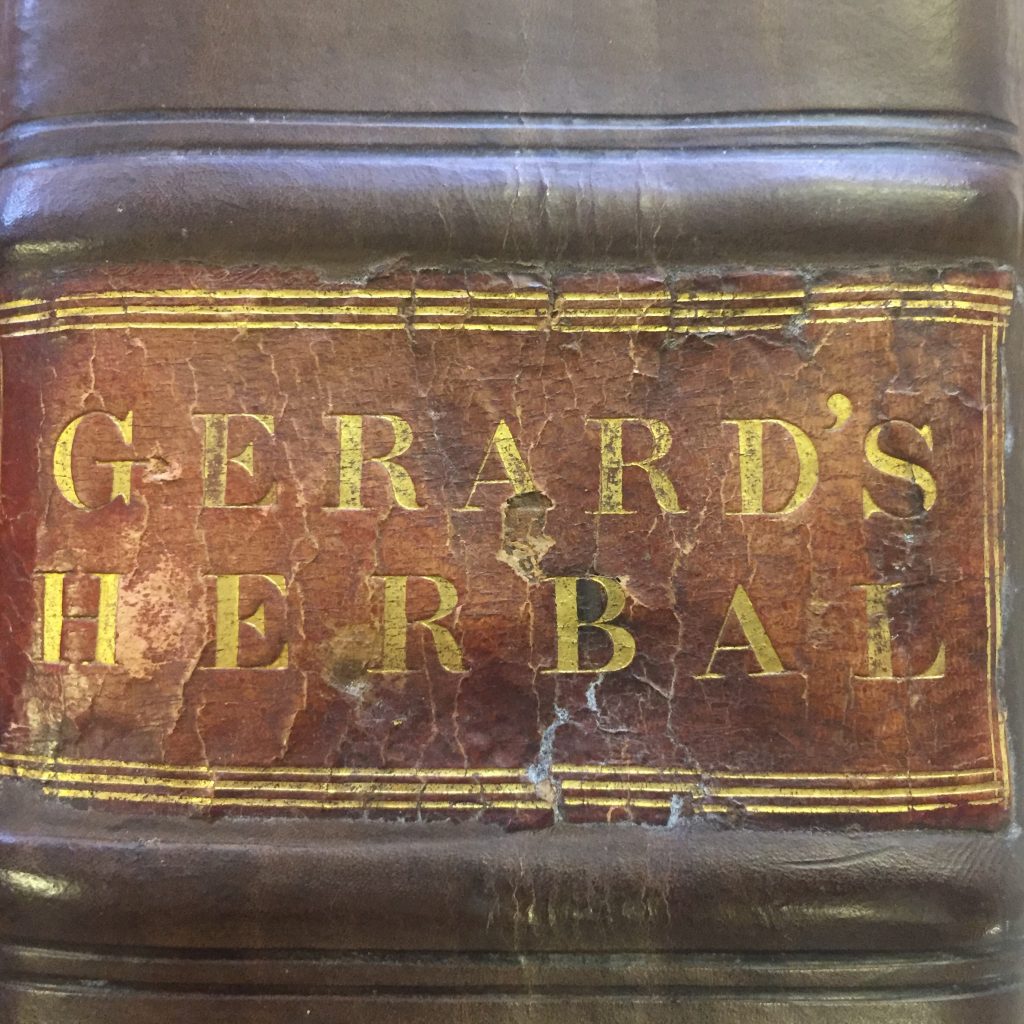
When I went in to the University Herbarium last week, I was extremely excited to discover that one of my fellow volunteers had very kindly brought in her incredibly beautiful first edition of Gerard’s Herbal, published in 1597. It’s been re-bound at some stage, and it’s absolutely immaculate. The paper is of variable quality, but the pages show hardly any signs of wear at all, which is incredible for a book that’s more than four hundred years old!

I’d been looking at a digital copy earlier in the week, as well as my own facsimile copy of a later edition, because I’d been writing a blog post about making glue from bluebells. (It was released on the 4th for Patrons, and is available to everyone today.)
I’m incredibly grateful for digital collections such as Archive.org, because they allow me to see the content of original texts and get stuck into some research even on the days when I’m too poorly to get out of bed, never mind venture out to visit an archive. There really is nothing quite as exciting as seeing the real thing though!
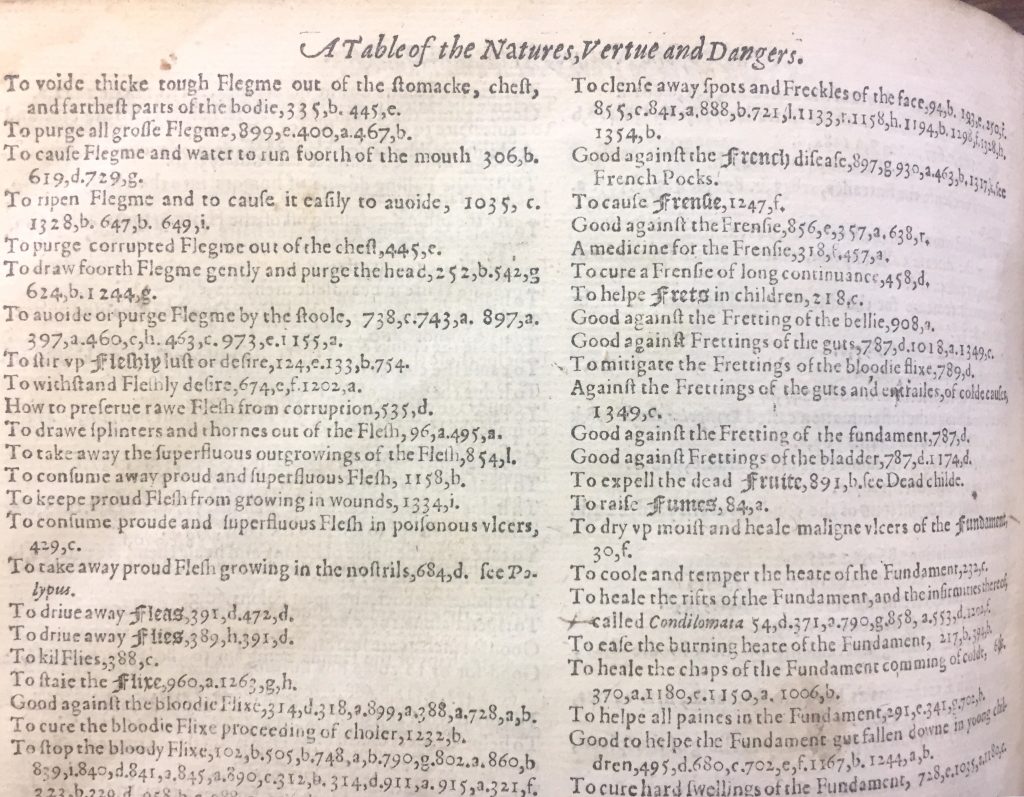
For example, I didn’t know that Gerard’s Herbal included “A Table of the Natures, Vertue and Dangers“, because it isn’t part of my facsimile copy of the third edition. Now that I know about it, I can make plans to look up specific illnesses (some of them described in rather alarming detail!) and see which plants are recommended and how they should be used.
As if the afternoon wasn’t exciting enough, I checked my email and discovered that I’ve been offered an unconditional place on the History MA!

This might be the most ridiculous thing I’ve tried to do since I was diagnosed with fibromyalgia back in 2012 (well, okay, after the swordfighting!), but I can’t tell you how much I’m looking forward to it. Everybody I spoke to while I was in the process of applying agreed that part-time would be the best approach. Not only does it give my unreliable health as much recovery time as possible, it also allows me to actually enjoy the individual modules rather than rushing through them – not to mention giving me an extra year to fine tune the details of my PhD proposal, if that turns out to be the path I want to take.
I still have a couple of sewing and knitting projects for friends and family on the go (all delayed by my health having leapt out at me recently), but as soon as those are finished I’m going to be hitting the books and spending as much time as possible studying before I start the course. It’s twenty-two years since I graduated from my BA(Hons), so I need to make sure I can still remember how to write academic essays as well as informal blog posts. I just can’t wait to get started!
It’s not all work, work, work…
A question I’m asked fairly often is whether I plan to eventually give up my job and work full time for myself, making and selling things. If you’d asked me a few years ago, the answer would have been a resounding yes! I’ve had a couple of periods in between jobs where I was lucky enough to be able to work for myself full time, and whilst I did enjoy it, the pressure of needing to bring in a steady income coupled with the isolation of being alone at home all the time made me, quite frankly, go a bit bonkers.
For the past five years I’ve been volunteering and subsequently working at The Museum of English Rural Life, in a whole host of different capacities.
Chicken-wrangling, during a visit from a local farm…
Dressing (approximately) as a Victorian, for a Dickens at Christmas event…
…and bonnet-wearing, with colleagues, for #museumselfie day on Twitter, in the photo at the top!
As Learning Assistant I had access to the most fantastic supply of materials, so I could work with the Toddler Time group, and with families to make all sorts of things…
… like this “pomme pomme” for Apple Day!
This paper puppet, inspired by our life-size straw effigy of King Alfred…
…and these adorable little Christmas trees. Recycled cardboard tubes and paper plates are an extremely versatile mainstay of toddler craft projects!
Admittedly I’m not working with the toddlers at the moment, having asked for a small cut in my hours to try and get my health back on track. But I am still working as part of the Visitor Services team, which means mostly half-days on the front desk meeting and greeting visitors to the museum, helping to look after the shop, and being on hand at lots of different types of events. I haven’t stopped working on the craft projects completely (I’m currently putting together a printing activity for our Village Fete), and I’m lucky enough to work with a great team of colleagues – many of whom I now count as friends.
Of course, we all have days when we wake up in the morning and think, “I wish I didn’t have to go to work today”, especially when the making is going well, and I don’t want to have to take a break from a particular project. But having a steady part-time job gives me just enough income that I don’t have to rely on my artwork to pay the bills. This alone is incredibly liberating, as it gives me the freedom to experiment with different projects without having to worry about whether they’ll sell. It also gives me enough time to actually do the work, as well as being fantastically inspiring! Since being at the museum I’ve learned to make felt, to use a drop spindle and a spinning wheel, and been privileged to work with lots of other fantastic artists. There are tools and textiles in the collections which are endlessly fascinating, as well as tremendously knowledgeable colleagues to talk to. The garden is beautiful, and there’s always something different going on.
There’s a school of thought which suggests that the only ways for an artistic type to actually earn a living are either by teaching, or working part-time for somebody else. At the museum I get to do a bit of both, and a lot more besides. What more could I ask for? I used to think that my eventual goal should always be to end up working solely for myself, making a living from my artwork and sewing. It turns out that having this balance suits me much better, and I hope it can continue for many years to come.
(And thanks to the marvels of Modern Technology, this should magically update itself while I’m at work today!)
Fuzzy red apple
It’s Apple Day at the Museum of English Rural Life next Saturday – October 19th. I needed to come up with an apple-related activity for families, but because my usual teaching space is being turned into a café for the day we’ll be doing the activity in the museum itself. Because a large number of our objects are on open display, this means the activity has to be very clean – no glue, no glitter, no paint.
Enter this ridiculously cute apple pompom! I used a mug as a template for the outer circle, and a bottle of tipp-ex for the centre. This results in a pompom about the size of a tennis ball, and uses about 20 metres of chunky wool. After you’ve tied off the centre of the pompom, you just wrap a pipe cleaner through before you remove the cardboard, and then twist the ends into a stalk and a leaf. Ta-da!
I know it’s just a simple little thing, but I’m disproportionately pleased with how this has come out. The yarn is so soft, and the pompom is a lovely size, and I might just have to rummage through my yarn stash and make some for myself! I’m usually opposed to the making of novelty yarn items that have no functional value, but I can feel myself being strongly swayed by this one.
If you want to make one for yourself, all you need to do is take yourself and 50p (plus the £1 entrance fee for adults) down to MERL next weekend!

